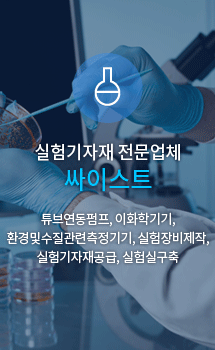안내사항 |
현재 홈페이지에 등록된 제품들은 재고 유무와 관계없이 구입이 가능하며, 별도문의의 상품인 경우 반드시 유선상 확인 후 구매부탁드립니다.
납기가 표기된 상품의 경우 일반적인 수입진행에 소요되는 기간이며, 상품에 따라 납기일정이 추가 될 수 있으니 참고부탁드립니다. |
Titanium dioxide Nanoparticles (TiO2)
이산화티타늄 나노파티클
Description
· 이산화티타늄 나노입자는 내식성이 강하고 열 안정성이 높아 전자장치 및 연료를 비롯한 전기 화학 응용 분야에 널리 사용됩니다.
· This product has a high refractive index.
· It is biocompatible, non-toxic, and lightweight.
· It has strong corrosion resistance, high thermal stability, minimal ion release, and is non-magnetic.
· It has a Molar Mass of 79.9378 g/mol.
· It has a Melting Point of 1843 °C and a Boiling Point of 2972 °C.
· It exhibits a Density of 4.23 g/cm3.
Titanium dioxide is a molecule comprising one titanium atom and two oxygen atoms. It is famous for ultrafine titanium dioxide (TiO2) particles, nano-crystalline titanium dioxide, or microcrystalline titanium dioxide.
It has a diameter smaller than 100 nm and is white in color. It is a photo catalyst, implying that it can use light energy to catalyze reactions with other atoms at low temperatures.
Titanium dioxide nanoparticles are formed by titanium dioxide molecules joining together to create a cylinder’s surface. Each oxygen atom bonds to another titanium atom, resulting in a cylindrical lattice with each oxygen atom connected to two titanium atoms. Placing oxygen atoms among titanium atoms resulted in a significantly more complex nanoparticle structure. It is ideal for glass, optics, and ceramics since it is not electrically conductive.
It consists of at least one oxygen anion and one metallic cation. It does not dissolve easily in aqueous solutions.
It is exceptionally stable in applications ranging from clay bowl production to complex electronics in lightweight structural parts in aircraft and electrochemical applications such as fuel.
Because oxide compounds are basic anhydrides, they can induce redox to react with acids and act as potent reducing agents.
Synthesis
Researchers use sulfate, chloride, or sol-gel processes to produce the majority of manufactured titanium dioxide nanopowder. We use digesting ilmenite (FeTiO3) (titanium slag) with sulfuric acid to manufacture Anatase or rutile TiO2. The ultrafine anatase phase involves the use of sulfate solution. The ultrafine rutile form is a result of chloride solution.
To manufacture Natural or rutile nanoparticles, we follow the chlorination process at temperatures ranging from 850 to 1000 °C in the chloride process. Moreover, we follow vapor-phase oxidization of the titanium tetrachloride to generate ultrafine anatase.
Researchers cannot use Grinding to transform pigmentary TiO2 to ultrafine TiO2. Ultrafine titanium dioxide may be produced using various methods, including precipitation, gas-phase reaction, sol-gel, and atomic layer deposition.
Properties of Titanium Dioxide Nanoparticles
· This product has a high refractive index.
· It is biocompatible, non-toxic, and lightweight.
· It has strong corrosion resistance, high thermal stability, minimal ion release, and is non-magnetic.
· It has a Molar Mass of 79.9378 g/mol.
· It has a Melting Point of 1843 °C and a Boiling Point of 2972 °C.
· It exhibits a Density of 4.23 g/cm3.
Applications of Titanium Dioxide Nanoparticles
Titanium Dioxide Nanopowder is part of a film that uses light energy to initiate a chemical reaction that kills micro-organisms on surfaces. Because it reflects all hues in the visible light spectrum, the light reflected from it is white. This feature makes it suitable as a white pigment in paintings and may result in a white residue on the skin when you apply sunscreen. It can also help in eliminating eliminate cancer tumors. It helps remove environmental pollutants, such as NO2, from flue gases and other sources. Furthermore, it may break down SOx, a hazardous inorganic molecule in the atmosphere.
Because of its capacity to disrupt cell membranes, harden viral proteins, regulate virus activity, and catch infectious particles, it frequently uses sterilization and virus restraint medicines. It can eradicate micro-organisms and is perfect for wastewater treatment due to its low cost, corrosion resistance, and general stability. It is used as packing material in solid-phase extraction (SPE) to preconcentrate and remove contaminants from water for surface water treatment. It involves the removal of the ripening hormone ethylene from storage facilities for perishable fruits, vegetables, and cut flowers. It is a long-term dental implant success as it helps manage the infection and acquire new implant insertion technologies in bone.
How to Use it?
Titanium dioxide is not generally soluble in water. Mix one part of the product with three pieces of warm water or carrier oil. Water is typically quicker and easier to mix than oil. It takes a long time to dissolve in water. Some titanium dioxide nanoparticle forms can only be dispersed in oil, but researchers can use water or oil for others. Another option is to use a portable electric beater.












